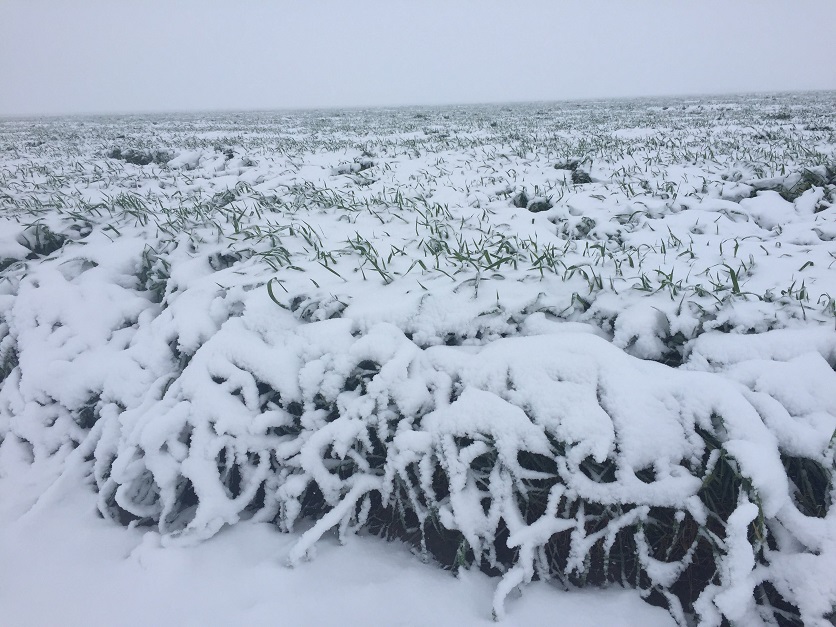KANSAS, May 3, 2017 - A foot of snow fell on a good chunk of the western Kansas wheat crop this weekend, striking a devastating blow to a region known for its robust wheat production. It was one of several weather events this week that delayed planting, flooded fields and caused farmers to rethink their planting mixes.
The losses are obvious, but Washington strategists are trying to see the event as a potential moment for educating farm program skeptics. The National Association of Wheat Growers took to Twitter to share a video of a Kansas wheat farmer digging wheat out from a snow bank and asking the Heritage Foundation how the situation could be handled without crop insurance.
“This is why we need (crop insurance), and this is why we need a farm bill,” NAWG CEO Chandler Goule told Agri-Pulse. “When your entire year’s profit got wiped out yesterday, what do they expect those who provide the food and the fiber and the fuel for this country to do?”
Goule said early estimates were showing 43 percent of the wheat in Kansas – consistently one of the top two wheat states in the country – will be lost in the storm. That number could go higher as some areas that weren’t hit with the snow were hit with freezing temperatures that will also damage the crop.
According to USDA statistics, the Kansas winter wheat crop was 44 percent headed, or forming grain, at the end of April, better than the 33 percent five-year average.
Bob Young, the chief economist for the American Farm Bureau Federation, echoed Goule’s comments, saying events like the weekend’s snowfall are “the whole reason that we’ve got the crop insurance programs in place.” Weather problems were not limited to Kansas; cool, damp conditions have slowed plantings across many commodities in many areas around the country. Young says if those circumstances persist, it could have an impact on planting decisions.
“We continue another week, two, three, or whatever of this kind of wet, cold conditions, you’re going to begin to get some farmers thinking about going with plan B instead of plan A,” Young told Agri-Pulse. “Maybe get a little shift out of corn, move into beans, so move a few acres around.”
Young added that 1 or 2 million corn acres shifting over to soybean production “wouldn’t surprise me.” While signals are starting to materialize, Young emphasized that it’s too early to talk about serious weather issues in 2017 plantings. “It is still early days yet,” Young said. “We have historically demonstrated that we can throw a lot of crop in the ground in a hurry once things do turn around and proceed to pace.”
#30


